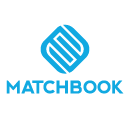Reference Based Mastering (RBM) makes use of reference sources like Dun & Bradstreet to match and master records for accuracy. By enabling data users to inform the process, the system is powerful and flexible. Users can set the rules they wish to use for their data, process it through the solution, and always end up with an accurate set of data. Unlike traditional MDM.
—————————————————————-
Mastered data is long considered the holy grail by CDOs and CIOs. It is no surprise that Enterprises spend millions of dollars in software, services and people in order to effectively deliver mastered data across the organization. The economic impact far exceeds a “feather in the cap” achievement and goes to the core of an organization’s competitiveness and agility to respond to changes in the business environment.
MDM solutions provide a robust approach to achieve mastered data. However, the conventional approach to MDM has pitfalls that are well documented by the MDM community, that enterprises should heed when embarking on the journey. Key among them are data ownership, lack of knowledge of the intent, and false positives with mastering.
The conventional approach to mastering data involves, among other things, the capability to match and merge data. The approach to match and merge has become far more sophisticated as MDM vendors provide new ways to match and merge with complex rules-based criteria and AI/ML based solutions.
In my conversations with organizations that are using these MDM capabilities to master their data, an unsettled feeling sets in when trying to balance receiving false positives, leaving too much data un-mastered, or dedicating more and more manual manpower to master and steward this data. Regardless of the approach, these processes are tightly controlled by a central group within an enterprise and not the true data owners of the data. This leads to lower adoption of mastered data within individual business units.
How do you democratize the process of mastering data so that data owners have more control over how their data is mastered?
For one, it involves a distributed governance model, giving the owners tools to master their own data. In my 20 years of experience in the data, analytics and MDM space, a robust way to accomplish distributed and controlled mastering of data is to use a common reference source to master data at the individual business units and subsequently using the identifiers provided by a common reference source to master the data across the enterprise.
For business data (customers, accounts, vendors), an established reference source such as Dun & Bradstreet can provide the relevant identifier such as the DUNS Number that uniquely identifies an individual company or location of a company. If you are a salesperson selling services to two different Starbucks’ on the same street a few blocks from each other, you won’t run the risk of an MDM solution falsely merging those two customers into a single customer record purely based on a match-merge capability. Instead as the salesperson responsible for these two accounts, you match this data to Dun & Bradstreet’s reference data set and be able to attach to each record a unique DUNS Number.
Reference sources don’t necessarily have to be external reference sources. They can also be an Enterprises’ unique MDM record identifier or an internal reference dataset that is vetted for your organization.
Mapping your data to a reference data set in this way provides complete control to the business units and takes away any ambiguity of mastering the record, whether from a single system or from across the organization using that reference identifier. This approach is something I call Reference Based Master (RBM). The benefits at a business unit level are, more control; and at an organization level, a true “golden record” that is trusted across the organization. Other benefits of adopting Reference Based Mastering (RMB) techniques are, no requirements for a coordinated approach across the enterprise in order to start mastering the data. Individual business units and systems can start the process of integrating with the reference source and start the process of mastering their data.
I will caution that Reference Based Mastering (RBM) techniques is a means to an end and not a replacement for MDM or the benefits that MDM solutions provide enterprises. I consider RBM a starting point to a broader MDM strategy.
Over the past few years, I have seen this approach succeed with companies large and small as they work on building their master data strategy and solution. I would love to hear your experience on your MDM journey and your thoughts on using Reference Based Mastering (RBM) techniques as a lead-in to a larger MDM strategy and implementation.


